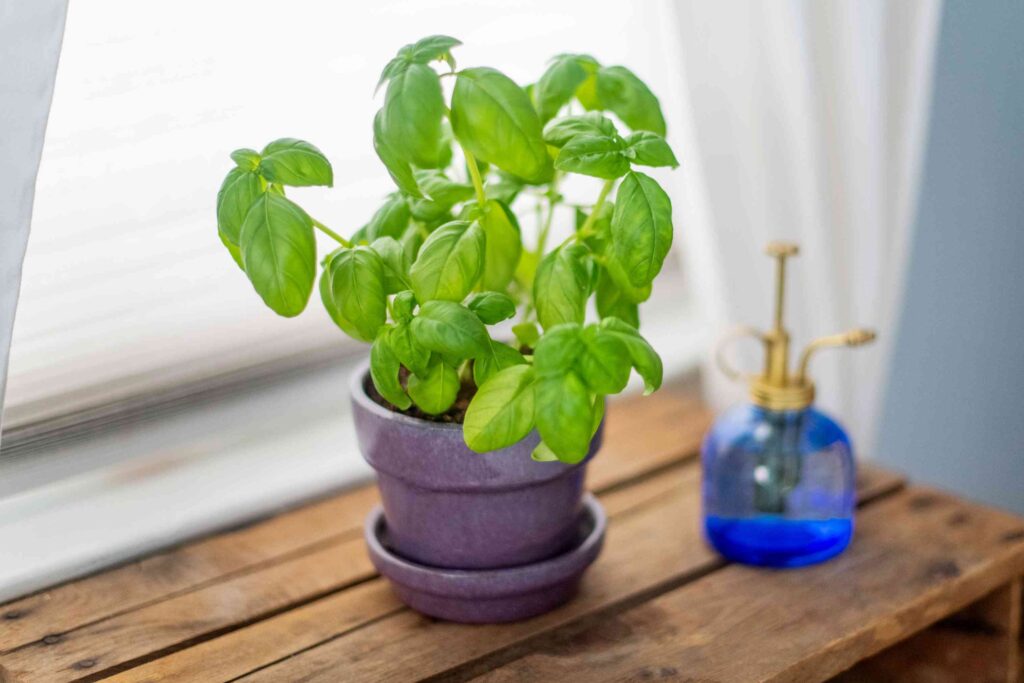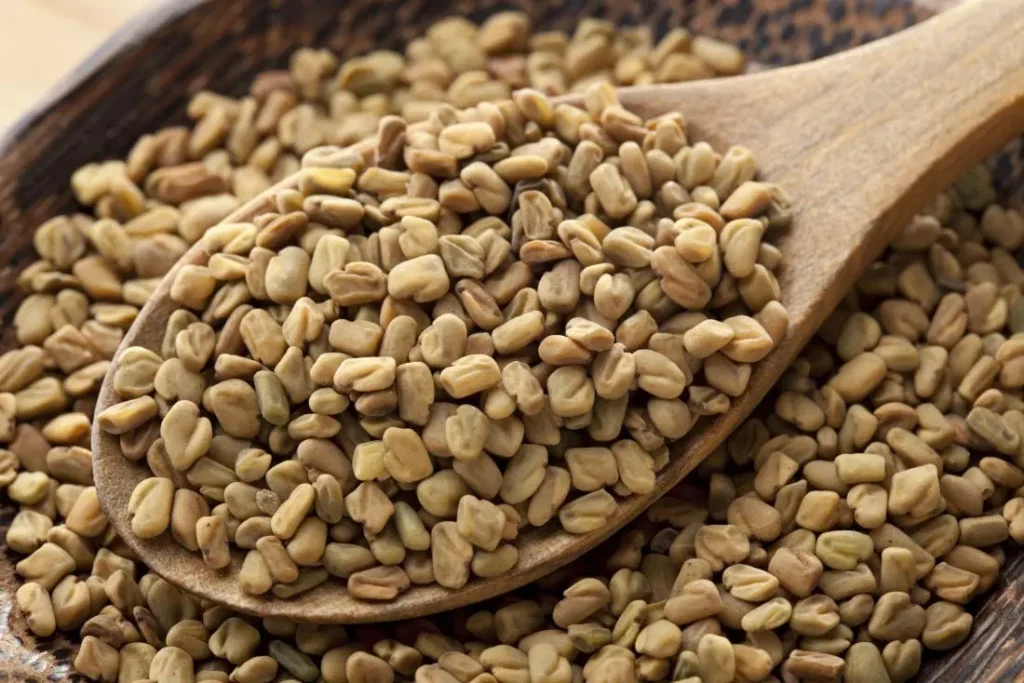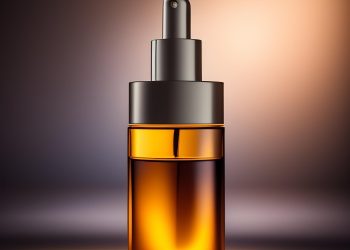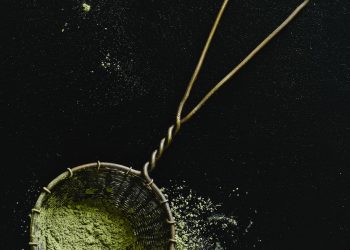One of the worst experiences to suffer from is an upset stomach.
Even for once, you surely know what it’s like to experience food poisoning!
Good news for you! In this article, we have some useful home remedies that will help you to get rid of food poisoning fast.
In the following article, we will look at:
- What is food poisoning?
- Natural ways to cure food poisoning
- How to prepare and use the remedies properly
Food Poisoning, Its Causes, and Symptoms
Otherwise known as foodborne illness, food poisoning causes many terrible symptoms such as vomiting, diarrhea, nausea and severe abdominal pain [1].
It is caused mainly by eating food or drinking water that has been contaminated with bacteria.
Some of the common bacterial strains responsible for this are Staphylococcus aureus, E. coli, Salmonella, Campylobacter, Shigella, Listeria, and Norovirus [2, 3].
Not washing the hands after using the bathroom and before eating or cooking, or using water that’s contaminated with bacteria are just some of the common scenarios that can lead to food poisoning.
Frequent hand washing and sanitary handling of food and beverages are a must to prevent this illness.
Now, if this ever happens to you, be sure to keep these handy home remedies in mind for immediate relief.
Natural Remedies for Food Poisoning
1. Basil
In India, basil is considered a “sacred medicinal plant” [4].
It’s not a surprise why.
This herb has been used for thousands of years to treat a wide array of illnesses, and one of these is food poisoning.
In 2010, a group of scientists from Ubon Ratchathani University assessed the effects of nine essential oils against various strains of Salmonella bacteria [5].
Findings revealed that among all the essential oils tested, basil had the strongest antibacterial activity against this bacterium [5].
The compounds that are said to be responsible for these actions are linalool, eugenol, 1,8-cineole, alpha-terpineol, germacrene and rho-cymene [5].
Another study notes that it can also effectively combat Staphylococcus aureus and E. coli [6].
It was highly active against many other bacterial strains as well, including Bacillus subtilis and Pasteurella multocida [6].
What You’ll Need:
- 3 to 4 drops of basil oil
- 1 glass of water
- 1 cup of basil leaves
- 1 pot of water
Recommended Directions:
- Add basil oil to a glass of water.
- Mix well.
- Drink once or twice a day until abdominal pain and other symptoms subside.
- Or boil a cup of basil leaves in a pot of water.
- Let it steep for 20 minutes.
- Drink the tea slowly two to three times a day until you feel better.
2. Thyme Oil
Like basil, thyme is a popular culinary spice added to dishes for extra flavor and aroma.
Did you know that it is also an efficient way to kill bacteria that cause food poisoning?
Several studies show that its active compounds carvacrol and thymol are highly effective in controlling common foodborne pathogens such as E. coli, Staphylococcus aureus, Listeria, Salmonella and Campylobacter [7, 8, 9].
In one of these studies, researchers from the UK probed the antimicrobial properties of 21 plant oils against these five “food-borne pathogens” [7].
Thyme is one of those with the strongest inhibitory effects with a bactericidal concentration of 0.075 percent or less [7].
This oil was found to have the ability to disrupt the mycelial growth of the bacteria and prevent it from spreading [9].
What You’ll Need:
- 2 drops of thyme oil
- 1 glass of warm water
Recommended Directions:
- Stir in thyme oil into the water.
- Sip slowly.
- Drink once a day for up to three days.
3. Coriander
Enjoy the multiple benefits of coriander by including it more in your daily diet.
If you don’t know yet, this herb, which is also known as cilantro, is packed with dietary fiber, vitamin C, vitamin K, iron, magnesium, potassium, phosphorus and many other nutrients essential for good health.
Apart from promoting a strong and healthy body, it can also ward off ailments such as those caused by eating foods contaminated with salmonella.
According to the Centers for Disease Control and Prevention (CDC), salmonella causes one million foodborne illnesses a year in the United States alone.
To prevent this bacterial contamination from causing you great distress, make use of coriander.
Two studies serve as proof that this herbal remedy can significantly inhibit the bacterial activities of salmonella [10, 11].
It works at a minimum bactericidal concentration of 6.25 mcg per ml [10].
Among the active compounds identified in coriander, dodecanal (C12) and decanal (C10) are the ones that contribute to its antimicrobial properties [11].
What You’ll Need:
- A handful of coriander leaves, chopped
- 1 cup of water
- 1 slice of lemon
Recommended Directions:
- Boil water in a pot.
- Add coriander leaves.
- Remove from heat.
- Let it steep for 10 minutes.
- Strain the leaves
- Squeeze the lemon slice.
- Drink the concoction once a day for up to five days.
4. Ginger
There are many remarkable anecdotes that you can find about the historical use of ginger as a medicinal plant.
For years, healers have relied on this rhizome to treat a myriad of illnesses including nausea, vomiting, bacterial infections, and so on.
Foodborne pathogens, even those that are resistant to antibiotics, can also be neutralized with ginger [12].
In a 2005 study published in the International Journal of Molecular Medicine and Advance Sciences, it was shown that ginger can prevent the growth and spread of food contaminants such as Salmonella, E. coli, Shigella and Staphylococcus aureus [13].
Catechins are pointed out as the compounds responsible for this mode of action [13].
This makes ginger an ideal remedy for moderate to severe cases of food poisoning.
What You’ll Need:
- 1 tablespoon of ginger, chopped
- 1 cup of water
- 1 teaspoon of honey
Recommended Directions:
- Put water in a pot, and bring to a boil.
- Add ginger.
- Simmer for 10 minutes.
- Remove from heat and strain.
- Mix in honey.
- Drink ginger tea twice a day until you’ve recovered from the illness.
Also Read: How To Use Ginger For Acne: 19 Effective Ways With Directions
5. Garlic
Garlic won’t be called nature’s antibiotic without a good reason.
There’s a long list of ailments that can be cured with garlic.
These include but are not limited to colds, flu, arthritis, asthma, insomnia, ulcer, bacterial infections, intestinal parasites, and high blood pressure, among others.
For many years, scientists have explored the healing properties of garlic, and many have unraveled remarkable results.
That’s not all.
This herbal remedy can also inhibit the activities of Salmonella, E. coli, Listeria, and Staphylococcus aureus by up to 80 percent [14].
Various other studies confirm garlic’s efficacy in combating foodborne pathogens [15, 16, 17].
All these findings are proof enough that this remedy can also be used to fight off food poisoning caused by these mentioned bacterial strains.
What You’ll Need:
- 1 clove of garlic, crushed
- 2 cloves of garlic
- 1 glass of warm water
Recommended Directions:
- Chew one garlic clove.
- If you can’t bear the taste, add honey.
- Do this several times a day.
- Crush two cloves of garlic.
- Chop into very small pieces.
- Add to a glass of warm water.
- Mix well.
- Drink the concoction twice a day until condition improves.
6. Oregano
Most people know oregano as a potent healer of respiratory ailments.
You’ve probably heard of stories in which it was used to treat a cough and other related conditions.
As it turns out, there’s more to oregano than being a respiratory aid.
Oregano was described in a Portuguese study as a “powerful tool” in controlling infections caused by Listeria [18].
Another study, which can be found in the Food Science and Technology, points out that oregano also has the ability to suppress the growth and survival of Staphylococcus aureus [19].
Apart from killing food bacterial contaminants, this herb also has inhibitory effects on fungal pathogens that cause food spoilage [20].
By destroying the source of infection, oregano can also help alleviate the symptoms caused by food poisoning.
What You’ll Need:
- A handful of oregano leaves
- 1 cup of water
- 1 teaspoon of honey
Recommended Directions:
- In a pot over medium heat, boil water.
- Reduce heat and add oregano leaves.
- Switch off the heat.
- Strain the leaves.
- Stir in honey.
- Sip the oregano tea once a day until symptoms are gone.
Also Read: 10+ Health Benefits of Honey (Backed by Science)
7. Fennel
Fennel is rich in many essential nutrients such as B vitamins, vitamin C, potassium, phytonutrients, and fiber.
It has always been recognized for its antioxidant and antimicrobial effects that can ward off many types of serious health problems [21].
It has been found to lower the risk of heart disease, maintain proper levels of cholesterol and more.
Research also suggests that it is also useful to inhibit food poisoning and preventing food spoilage [21].
Many studies indicate that fennel has potent inhibitory effects against bacteria and fungi that contaminate food [21, 22, 23].
It has broad-spectrum antimicrobial effects, which means that it’s active against many types of pathogens.
This comes in handy when you don’t know what particular bacterial strain has caused your illness.
What You’ll Need:
- 2 tablespoons of fennel seeds, crushed
- 1 cup of water
Recommended Directions:
- Put water in a pot.
- Add fennel seeds.
- Bring to a boil.
- Simmer for 5 minutes.
- Remove from heat, and strain seeds.
- Drink concoction once a day for one week.
Also Read: 14 Benefits of Fennel Tea You Don’t Want to Miss Out on
8. Turmeric
Turmeric has long been hailed as the “king of spices” with its anti-inflammatory, antibacterial, and anti-cancer properties [24].
It’s most popular for being a strong anti-inflammatory, helping resolve many types of inflammation-related disorders.
Many people rely on it for treating arthritis and similar conditions.
Of course, it has more to offer.
For cases of food poisoning, turmeric can come to your aid.
According to Indian researchers who investigated that anti-microbial effect of turmeric, this herb can successfully control spread and growth of common food pathogens including E. coli, Staphylococcus aureus and Salmonella [25].
Its antimicrobial properties were similar to standard antibiotics such as gentamycin, ampicillin, erythromycin, and doxycycline [25].
Laboratory results show that turmeric extract has 100 percent inhibition rate of Staphylococcus aureus [25].
What You’ll Need:
- 2 cups of water
- 1 teaspoon of turmeric powder
- 1/2 teaspoon of cinnamon powder
- 1/4 teaspoon of black pepper
- 1 teaspoon of honey
- 1/4 teaspoon of ginger powder
Recommended Directions:
- Put all ingredients except in a blender.
- Blend until smooth.
- Boil water in a pot.
- Add the blended mixture.
- Simmer for 10 minutes.
- Drink the concoction three times a week for two weeks.
9. Fenugreek
Fenugreek’s positive impact on patients with diabetes, high cholesterol or bacterial infections has not gone unnoticed [26, 27].
This is just one of the many benefits that you can get from consuming fenugreek or by including it more often in your diet.
This herbal remedy can also work wonders to treat food poisoning for those suffering from it.
Research featured in the Journal of Pharmacy Research confirm that fenugreek is capable of killing pathogenic bacteria such as Staphylococcus aureus, E. coli, and Salmonella, all of which are common culprits in foodborne illness [28].
Its antibacterial actions can be attributed to the presence of saponins, flavonoids, and alkaloids [28].
What You’ll Need:
- 1 teaspoon of fenugreek seeds, crushed
- 1 tablespoon of yogurt
- 1 tablespoon of fenugreek seeds
- 1 cup of water
Recommended Directions:
- Combine the first two ingredients.
- Take a spoonful of the mixture.
- Eat this combination throughout the day.
- Boil one tablespoon of fenugreek seeds in a cup of water.
- Cover and let it steep for 20 minutes.
- Strain and drink the mixture.
- Do this once a day for up to one week, or until you feel better.
10. Neem
A versatile remedy, neem leaves have been used since the ancient times to cure leprosy, skin ulcers, heart disease, fever, diabetes, upset stomach, parasitic infections, eye problems, and gingivitis.
Since then, its healing properties have been the subject of a number of scientific explorations.
In 2007, scientists evaluated neem’s antibacterial effects against 21 strains of bacteria that cause food poisoning, which include but are not limited to Listeria, Staphylococcus aureus, E. coli, and so on [29].
The results were positive.
It turns out that neem extract has superior antibacterial properties that make it an efficient method for controlling foodborne pathogens and organisms that cause food spoilage [29].
If you want quick relief from food poisoning, try using this remedy, which only requires the use of neem leaves and water.
What You’ll Need:
- A handful of neem leaves
- 2 cups of water
- 5 drops of neem oil
- 1 teaspoon of olive oil
- Warm compress
Recommended Directions:
- Boil neem leaves in water.
- Remove from heat and strain the leaves.
- Drink the tea several times a week.
- Combine neem oil and olive oil.
- Mix well.
- Apply mixture thinly on the abdominal area.
- Press very gently.
- Put a warm compress on top of the area.
- This helps alleviate the abdominal pain caused by food poisoning.
Some Q&A About Food Poisoning
Q. I have loose motion due to food poisoning. What are its harmful effects?
A. For loose motion or diarrhea, you can face very adverse effects. In fact, one of the worst effects of it is dehydration. Dehydration due to loose motion can be of several types:
mild dehydration
moderate to severe dehydration
Q. How do I know if I am dehydrated due to loose motion?
A. Dehydration due to the loose motion has multiple symptoms.
For mild dehydration, symptoms include:
- A flushed face
- A feeling of extreme thirst which is more than the usual urge
- Inability to drink
- Both dry and warm skin
- Inability to pass urine
- Concentrated urine, having a dark yellow color
- Dizziness which gets worse when standing
- A weakness all over the body
- Muscle cramps in arms and legs
- Irritable with an uneasy feeling of sleepiness
- A headache
- A dry mouth with little and thick saliva production
For severe dehydration symptoms include:
- Very low blood pressure
- Fainting due to the low blood pressure
- Severe convulsions
- Bloated stomach
- Heart failure
- Dry and sunken eyes
- Wrinkled body skin
- Rapid breathing, with a feeling of breathlessness
- Weak pulse rate
Q. I am passing blood with my stools due to the food poisoning. What do I do?
A. If you are passing blood, then contact your physician immediately. You should not waste any more time.
Q. Will it eating out greatly increase the chances of food poisoning?
A. Unfortunately, yes. It is because there might be many bacteria in the kitchen. If the food is not prepared properly and hygiene is not maintained, then you might get food poisoning from there.
Q. How should I wash my hands to make sure no germ remains in them?
A. It is highly recommended that you should wash your hands with medicated soap or handwash thoroughly for at least 20 seconds. This will surely remove all the germs.
Q. Can pasteurized milk still be a risk of getting food poisoning from?
A. Unfortunately, yes. Even pasteurized milk may get contaminated after the process. That is why you should always bring your milk to a boil before drinking it.
Q. Is there any difference between bacterial or viral foodborne illness contracted due to food poisoning?
A. Yes. There is. But first, you must know that both of them cause the same symptoms when infecting a person. Antibiotics work best against bacteria but they don’t against viruses. That is why consult a doctor as soon as you think you have food poisoning due to a virus.
Bottom Line
Food poisoning causes distressing symptoms and should, therefore, be treated immediately.
You can make use of these herbal remedies to get rid of food poisoning as these get to the bottom of the problem.
While killing the source of infection, most of these remedies can also help alleviate the symptoms and make you feel better until you are completely well.
We really hope this article came to your help; if you have any questions or confusions regarding it feel free to ask us.
Also, don’t forget to share your experience with us by leaving your comments below.
Read Next: Nausea After Eating: Reasons And Remedies





